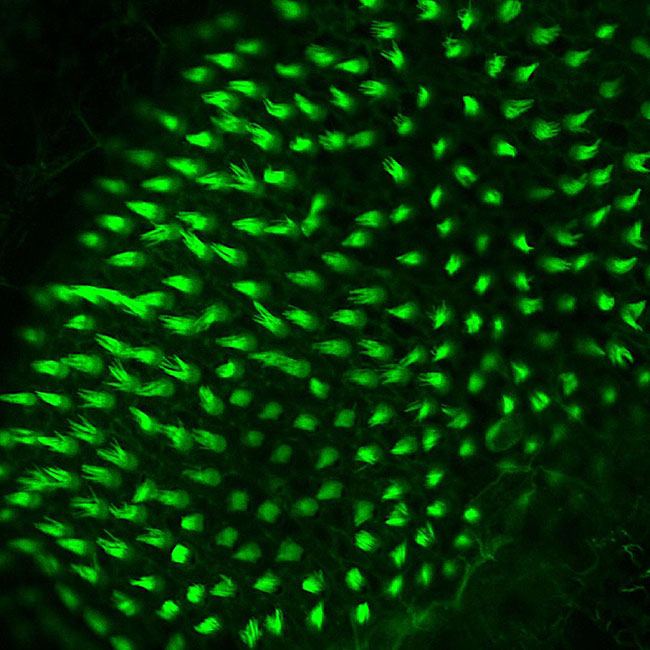Genomics study identifies unique set of proteins that restores hearing in zebrafish
NIH study shows the role of transcription factors in facilitating cell regeneration
National Institutes of Health researchers have discovered a specific network of proteins that is necessary to restore hearing in zebrafish through cell regeneration. The study, led by investigators at the National Human Genome Research Institute (NHGRI), may inform the development of treatments for hearing loss in humans. The findings were published in Cell Genomics.
Although hair cell loss cannot be replaced in humans, many animals, including zebrafish, can restore hearing after injury through the regeneration of hair cells. The regenerative properties of zebrafish hair cells prompted researchers to use this animal to understand some fundamental properties of regeneration.
Hearing loss affects around 37.5 million Americans, and most cases come from the loss of hearing receptors known as “hair cells” in the inner ear. Bristles that stick out of these microscopic hair cells move and bend when sound travels into our ears, resulting in electric signals sent through nerves and into our brains that allow us to process sound.
This page was last updated on Monday, October 10, 2022
